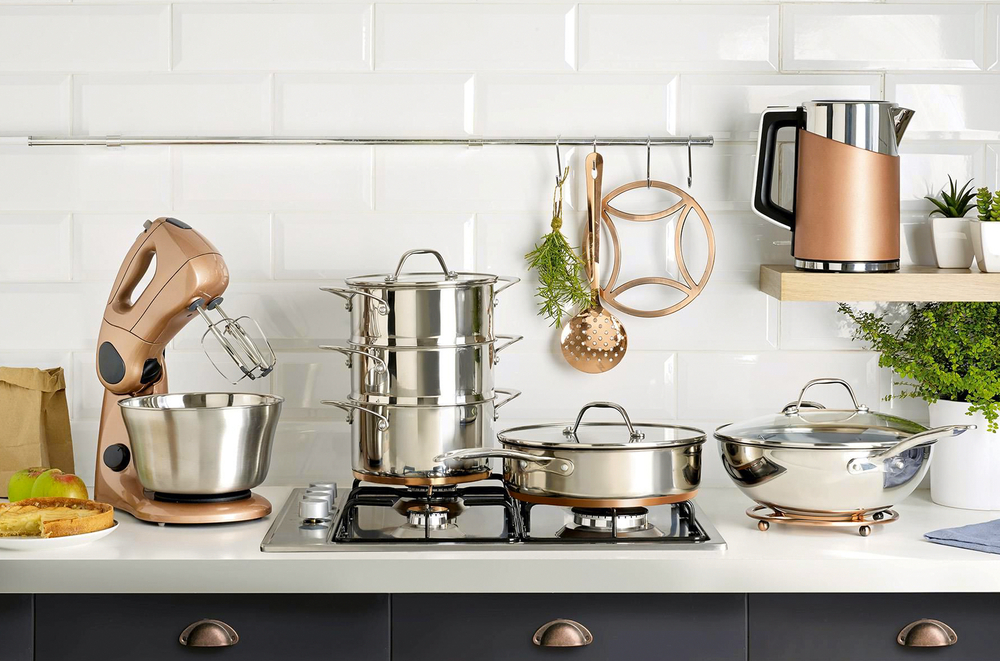
Stainless steel is one of the most popular materials for a whole multitude of household items. Primarily, however, it is used in kitchen appliances and accessories.
There is a degree of aesthetic reasoning when it comes to some people’s choice to choose stainless steel.
At the end of the day, stainless steel is ageless and can seem modern in any era.
Despite this, there are a number of properties that stainless steel possesses that makes it practically the best option for many items within the home.
One such property is that it can be easily sterilized, which is why stainless steel is the go-to material within commercialized kitchens, as well as a key staple within family homes.
It is also stain resistant and has anti-corrosive properties, which means it can remain looking like new for as long as someone looks after their long term investments.
With so many durable properties, many have made the switch to stainless steel in recent years as an alternative to single-use plastic.
It’s supposed to be just as easy as plastic, which has left many assuming that stainless steel is dishwasher safe, but is this really the case?
To fully answer this, you need to first understand a little bit more about what stainless steel actually is, and what is it made out of.
What Is Stainless Steel?
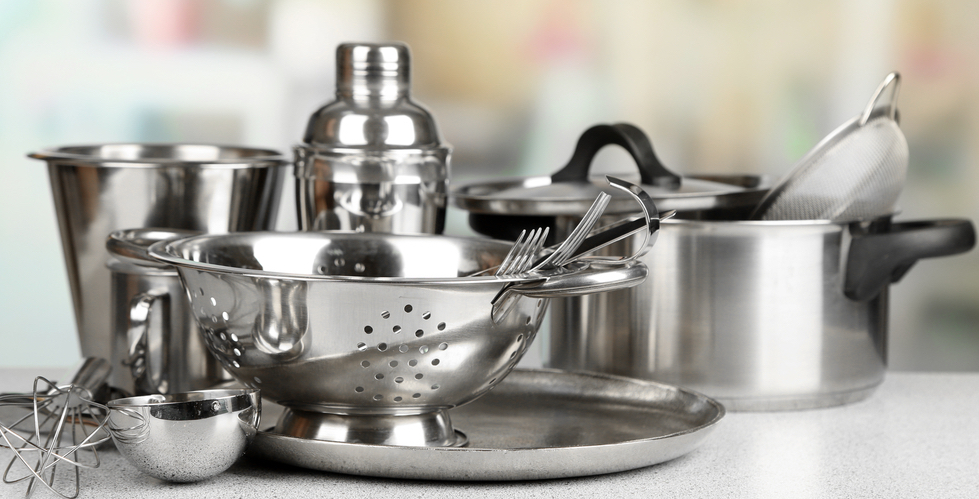
Stainless steel is an alloy of Iron that contains a minimum of 10.5% Chromium.
Chromium is a chemical element that produces a thin layer of oxide on the surface on the steel to prevent further corrosion of a surface. Said layer is often referred to as a passive layer.
Though 10.5% is the minimum, higher quality stainless steel tends to contain more of the chemical as this increases the resistance to corrosion.
In addition to this, stainless steel is also likely to contain varying levels of Manganese, Silicon and Carbon.
It may also contain Nickel, which is responsible for giving stainless steel the silver shine and providing some additional rust resistance for the product in question.
On some stainless steel, especially silverware, you should be able to find a stamp something along the lines of ‘18/8’.
This will tell you the amount of Chromium in the product on the left, and the amount of nickel on the right. The higher these numbers are, the better the quality.
The Short Answer
If you’re looking for the short and simple answer then yes, stainless steel is generally regarded as being dishwasher safe.
With that being said, using the dishwasher on these items comes with its risks.
To help you determine whether you’re willing to take the risk, we’ve put together the risks of putting some of the popular stainless steel items in the dishwasher.
Silverware

Most people will probably already put their stainless steel silverware in the dishwasher, and the good news is that this is perfectly safe.
It is advised that you use the silverware basket provided with most dishwashers in order to separate silverware out as this avoids mixing with other materials that could cause the stainless steel to erode.
You should also rinse the silverware off before placing it in the dishwasher to avoid prolonging its exposure to acidic foods, especially if you aren’t planning to run it immediately.
Some people may experience rust spots on their stainless steel knives after some time, but this isn’t anything to worry about, and the same thing would be likely to happen if you hand washed them.
The reason this happens is because the blades are often made out of a harder steel that remains sharp, but rusts more easily.
Drying them immediately after a dishwasher load finishes may help delay the onset, but using a stainless steel cleaner will make them look as good as new if you forget.
Pots And Pans
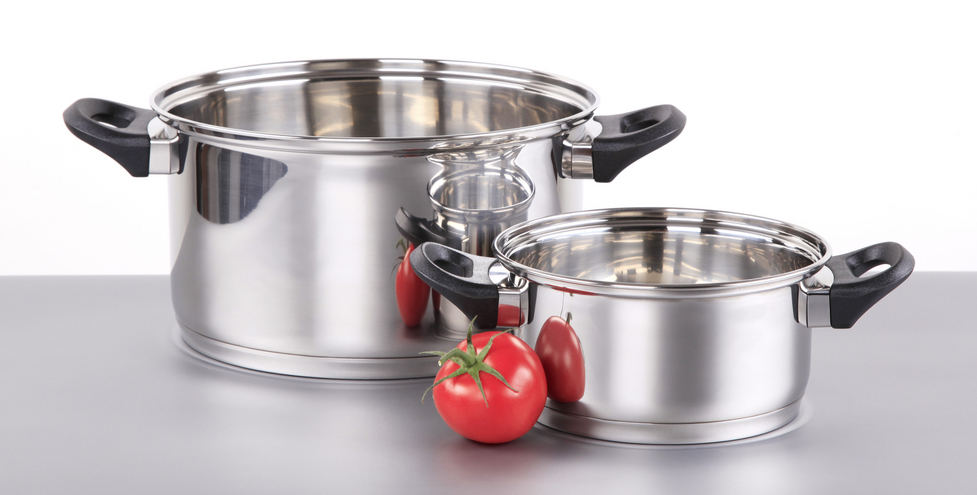
There is some disagreement about whether stainless steel pots and pans are dishwasher safe, but the majority of manufacturers would say that they aren’t.
They say that dishwasher detergents can be extremely harsh and may lead to corrosion of the stainless steel.
Some dishwasher detergents will say that this isn’t correct, with others agreeing that this is overcautiousness on behalf of stainless steel appliance manufacturers.
Others have said that they have experienced unfortunate side effects, such as watermarks that can be difficult to get out.
Generally, it’s considered that dishwashers will dull down the appearance of the pot or pan over time, which can lead to spotting or discoloration that is difficult to correct.
To avoid this happening to you, it’s advised that you hand wash your stainless steel pots and pans and dry them immediately.
The only ones you should use a dishwasher on are those that explicitly state that they are dishwasher safe, as these have been studied to make sure this is the case.
Kitchen Utensils
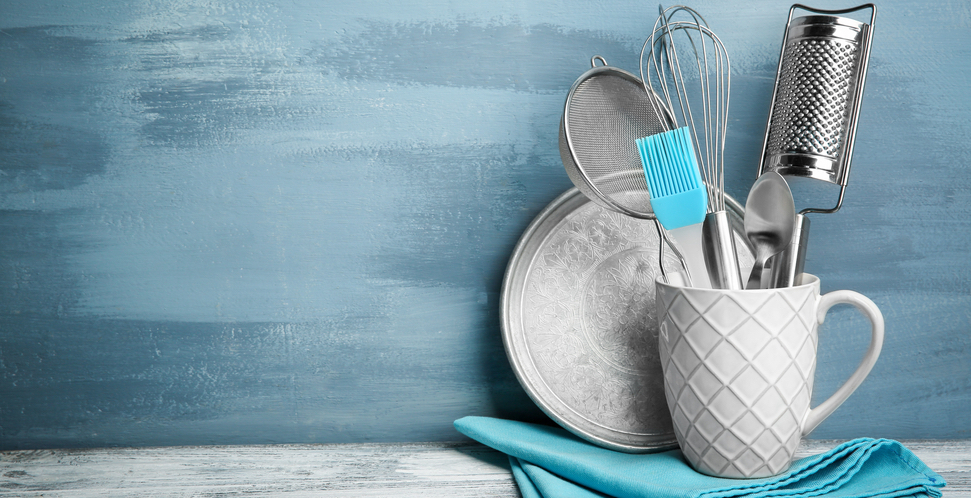
Although not the most common material used for kitchen utensils, there are a number of stainless steel ones on the market.
This includes things like fish slicers, spatchulas, serving spoons, and whisks.
Most people would categorize these things into the same category as silverware and not think twice about putting them in the dishwasher, but this isn’t generally the best practice.
While the mechanisms themselves aren’t generally considered to be dangerous to put in the dishwasher, the handles don’t react well to the onslaught of water.
This is mainly due to the fact that many of the handles are plastic, and even those that are made out of stainless steel are hollow.
Not only does this make it harder to get these tools clean, but it also provides dishwasher detergent with the perfect opportunity to dry into the handles, slowly corroding the material.
This may lead to rust on the inside, which can deteriorate the condition of the utensil and may lead to problems with rust.
To avoid this, it’s advised that you hand wash these items and are careful to only wet the part of the mechanism that was used during the cooking process.
Travel Mugs

Travel mugs have become increasingly popular in recent years as people attempt to break away from or reduce their risk of single use plastic.
It’s something often used for convenience purposes, so you might think they would be created to be dishwasher safe, but this isn’t necessarily the case.
If you own a stainless steel travel mug that isn’t insulated and isn’t colored, then you’re probably safe to put it in the dishwasher.
Most stainless steel travel mugs are insulated by nature, however, as this is how they keep hot drinks warm and cold drinks cold for longer.
This is the case with our Kool8 water bottle, which is fully insulated to keep drinks cold for up to 24 hours and hot drinks warm for up to 12.
While we cannot tell you what to do, we do implore that you understand the risks of dishwashing stainless steel travel mugs so that you can deal with the consequences.
The biggest one is that using a dishwasher may break the insulated features of your water bottle, which would render it useless and may mean you have to buy a new one far sooner than you had intended.
It can also lead to discoloration in colored and non-colored stainless steel devices, and rust may form over time.
If you want an alternative, it’s generally recommended that you rinse the travel mug in warm water immediately after you finish using it to avoid staining.
Then, give it a proper wash and dry it straight away, ready for whenever you next need it.

How To Care For Stainless Steel In A Dishwasher
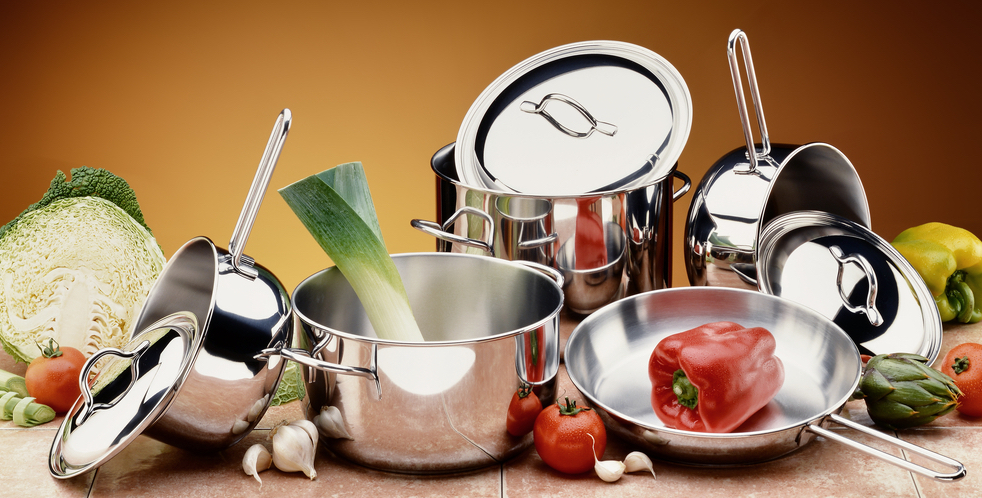
While our breakdown shows that you shouldn’t put every item of stainless steel in the dishwasher, we know it’s still the most convenient option for most people.
If you are going to ignore our warnings and continue to put it in the dishwasher, however, there are some ways that you can minimize potential damage.
The first thing you should do is research and invest in dishwasher detergent either especially for stainless steel, or one that contains as little harmful chemicals as possible.
To make your stainless steel dishwasher safe, you should also rinse any food off the items before putting them in the dishwasher.
This is especially important if you aren’t going to be putting on a load straight away, but it should also be done if you are, as it can prevent acidic foods from eroding the stainless steel over time.
The last thing you should try and do every time is dry your stainless steel dishes immediately after the dishwasher cycle has finished.
Additionally, you may want to invest in some stainless steel cleaner for things like silverware so that you can buff them up to their original shininess every few months or so.
Summary
To answer the question of whether stainless steel is dishwasher safe, the short answer is yes.
As this article dictates, however, the reality is often different.
You should use extreme caution when planning to wash your stainless steel items in the dishwasher, and remember that you are often doing so against manufacturer advice.
Though it may not be as much of a big deal with smaller items like stainless steel silverware, you should always try and wash larger items like pots and pans by hand.
At the end of the day, if you aren’t sure whether a stainless steel item is dishwasher safe, it’s probably best to be cautious and wash it by hand if you can.
If you are going to go against these warnings, use the tips we have suggested to minimize any potential consequences.
You should also remember to use stainless steel polish when you notice your items are becoming duller if you want them to return to how they looked when you bought them.
Provided you follow our advice, stainless steel is a brilliant investment, and one item could last you for several decades if looked after properly, so it’s well worth putting in the time now.


